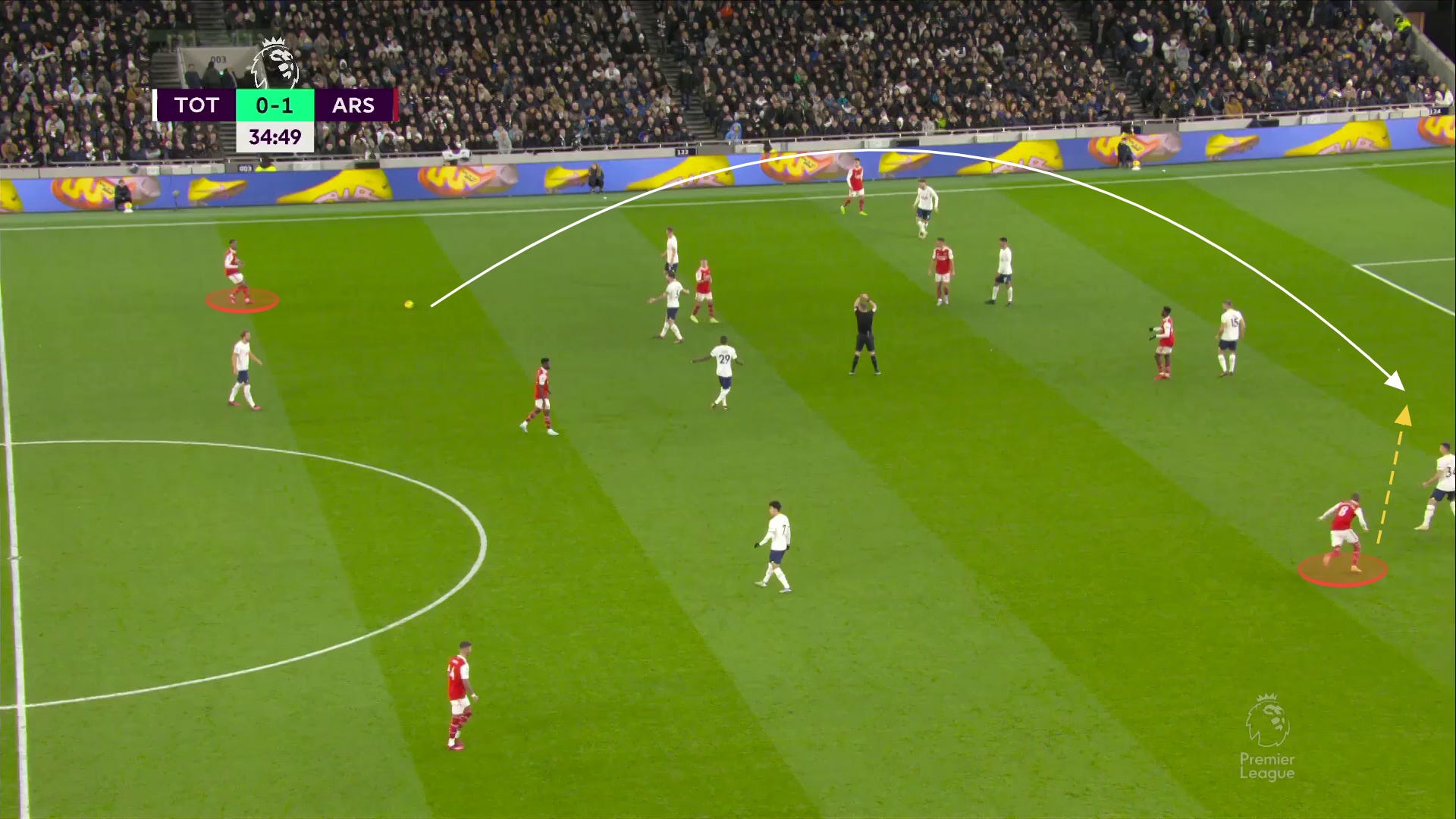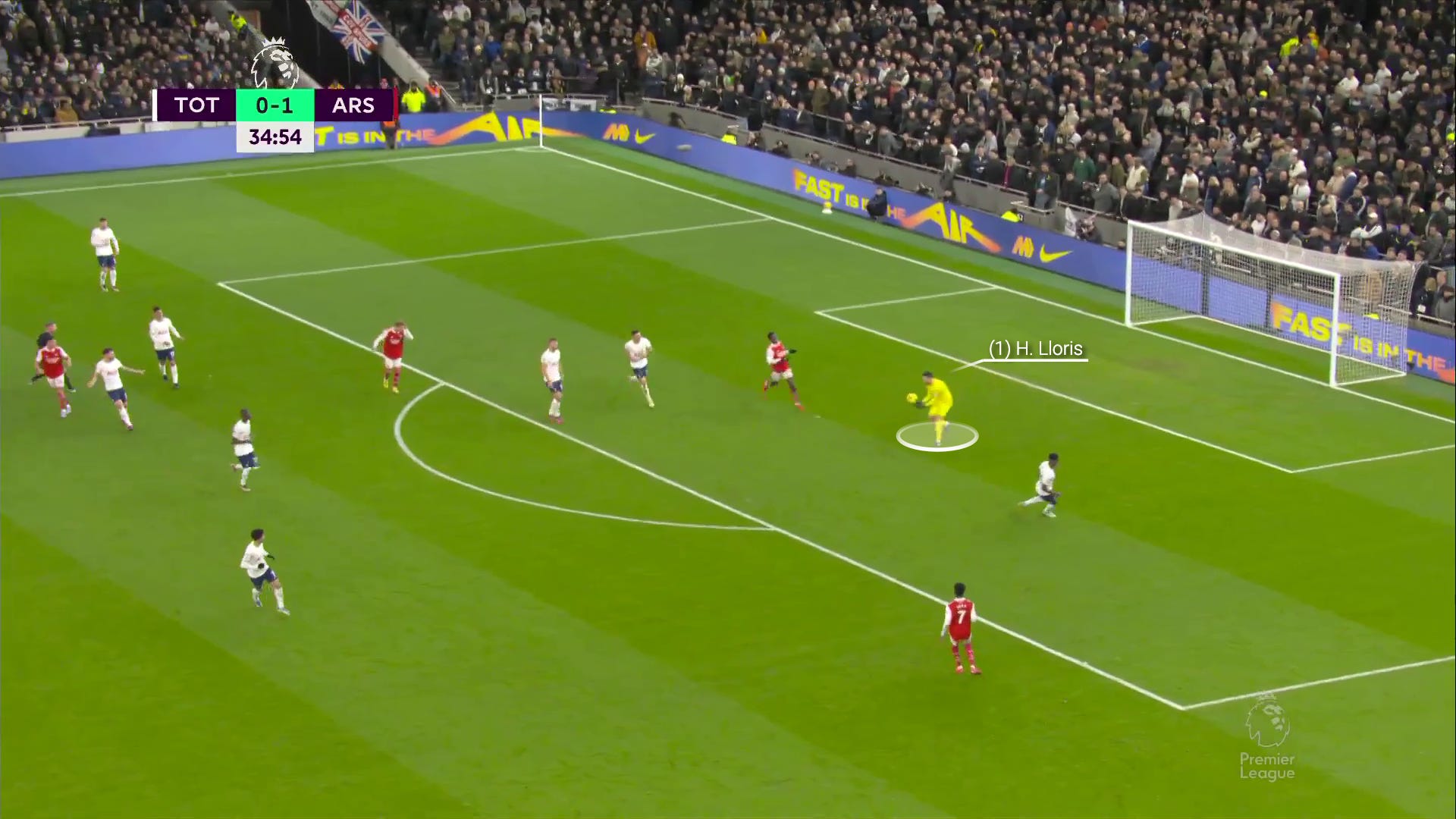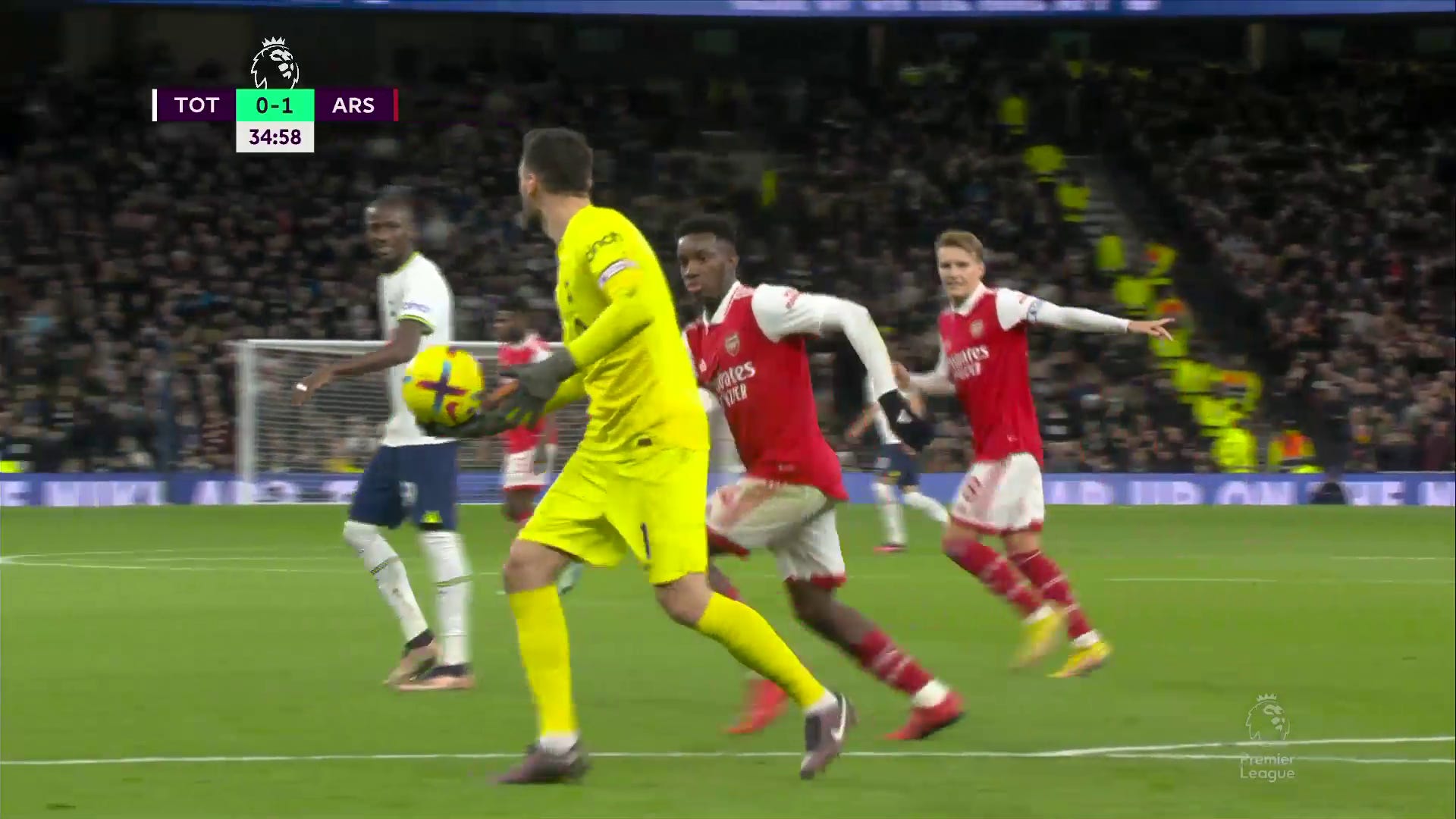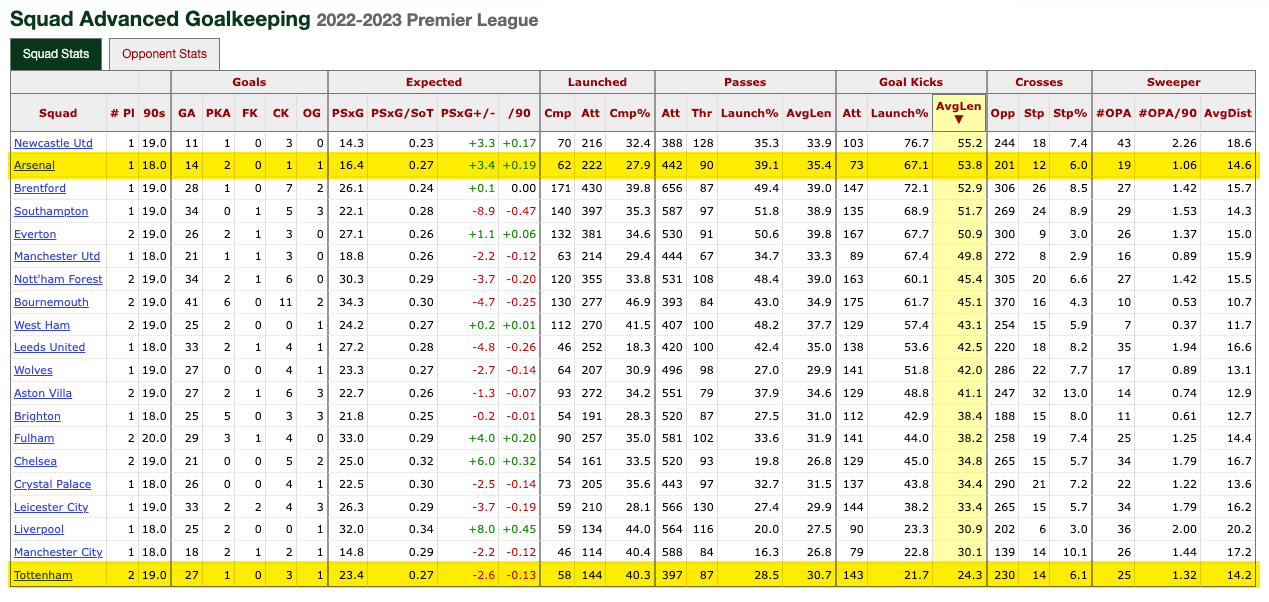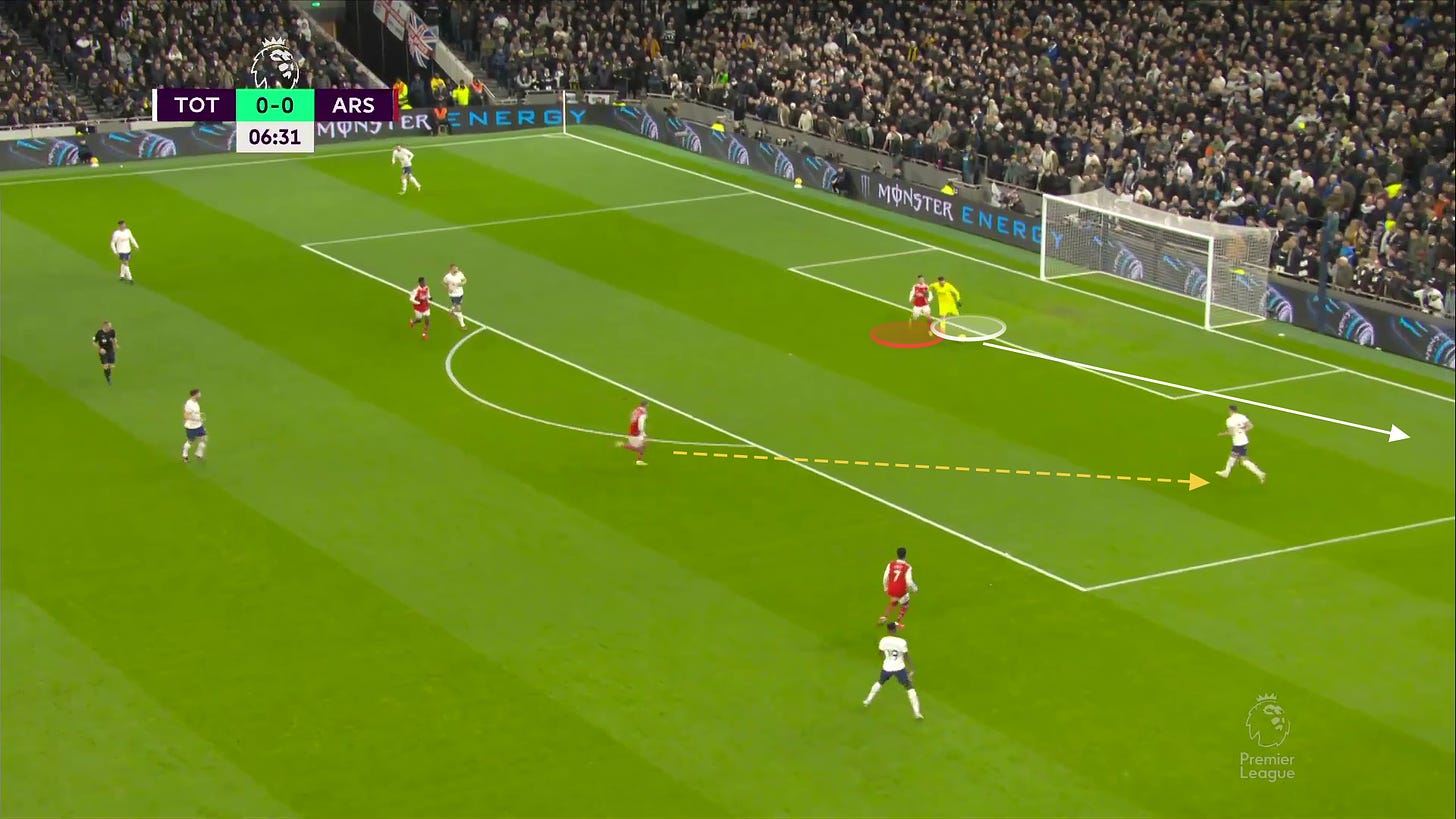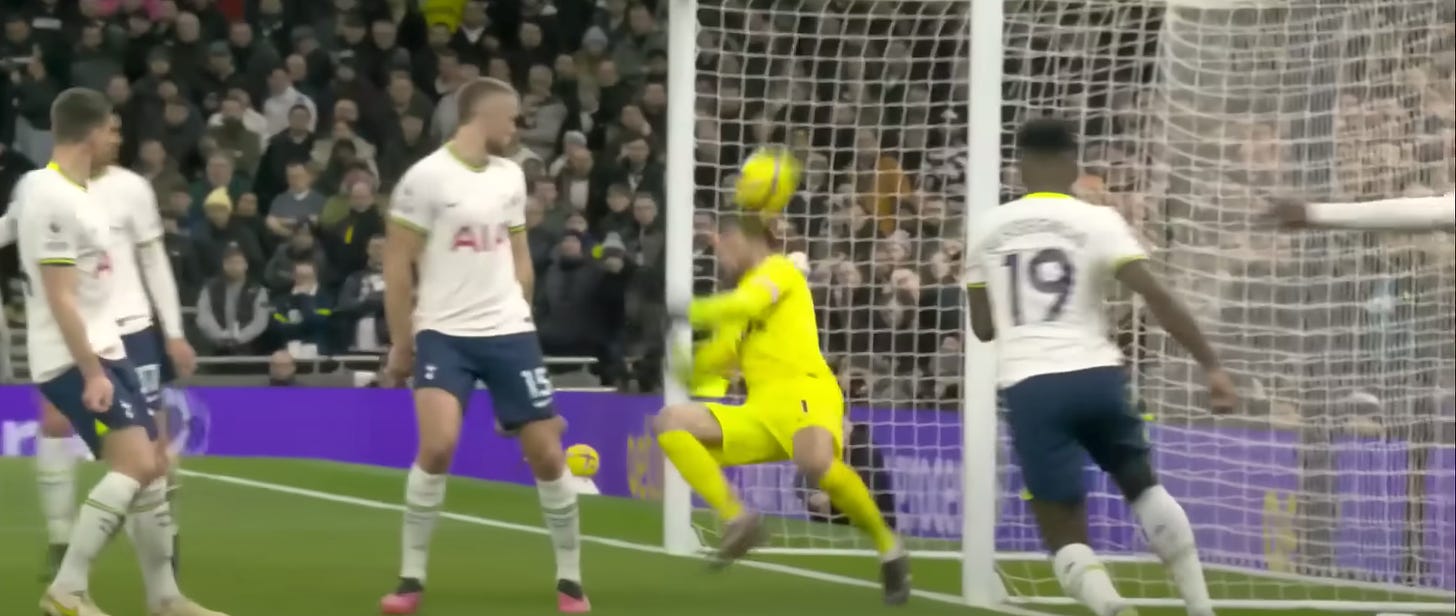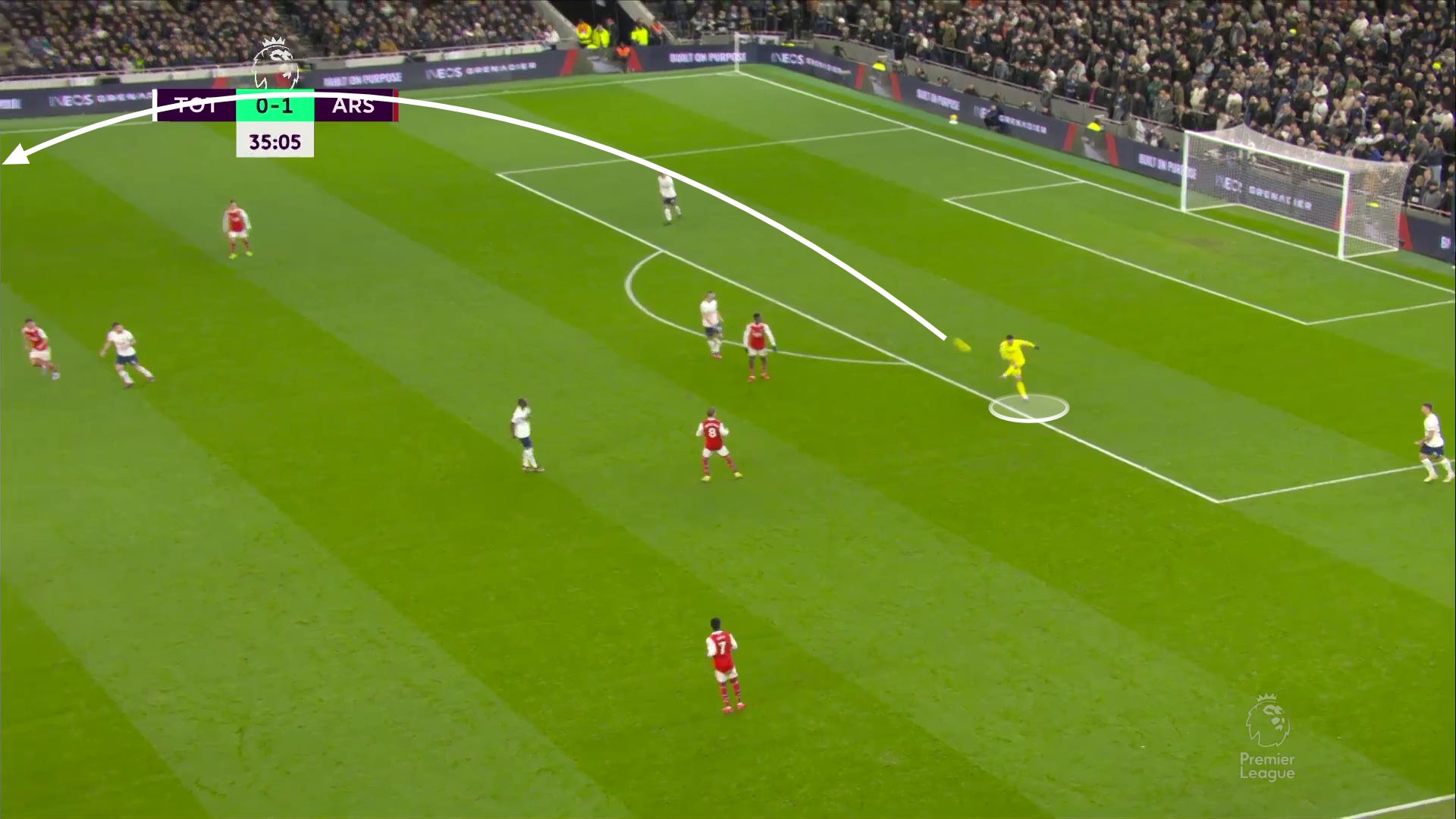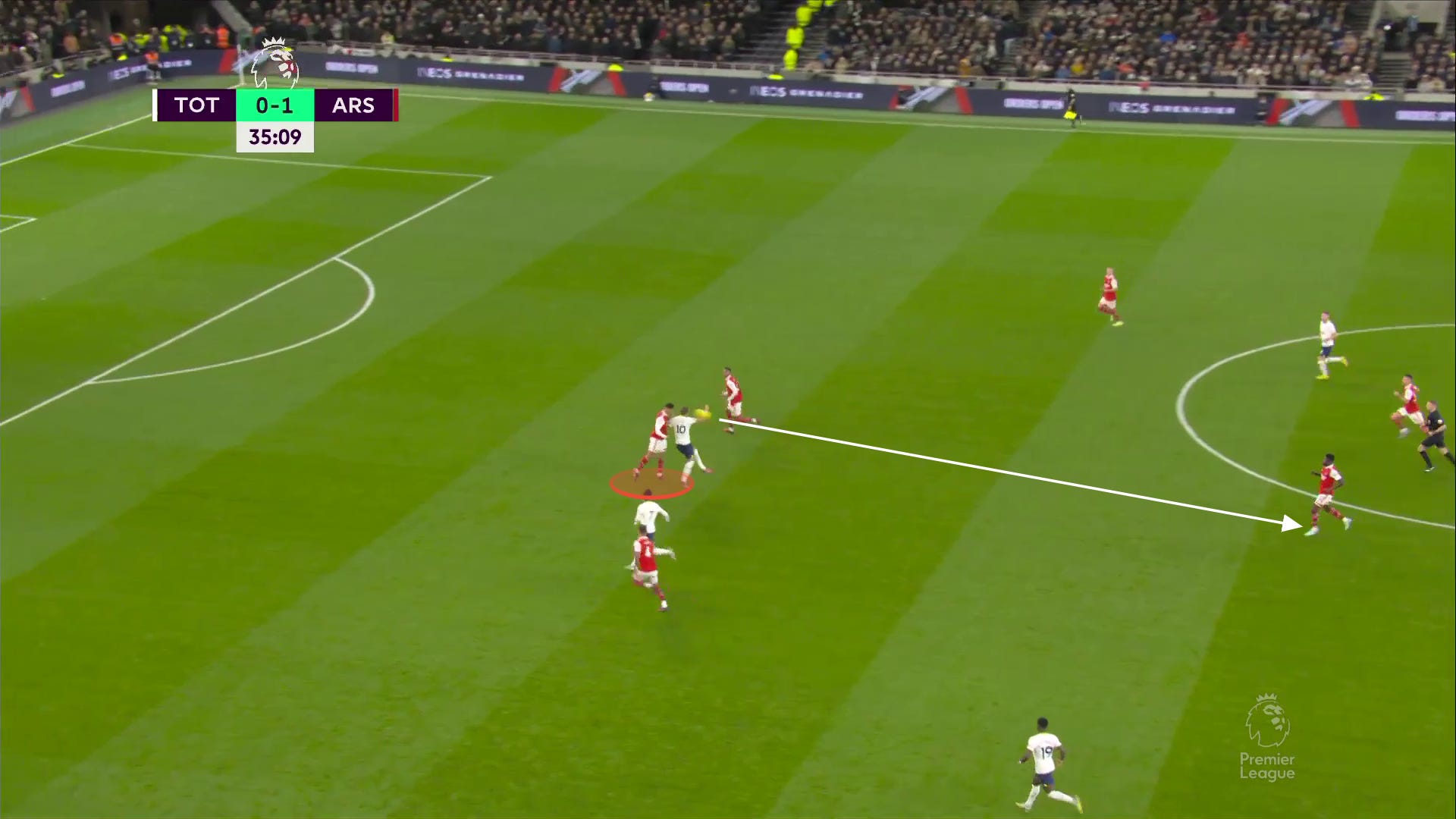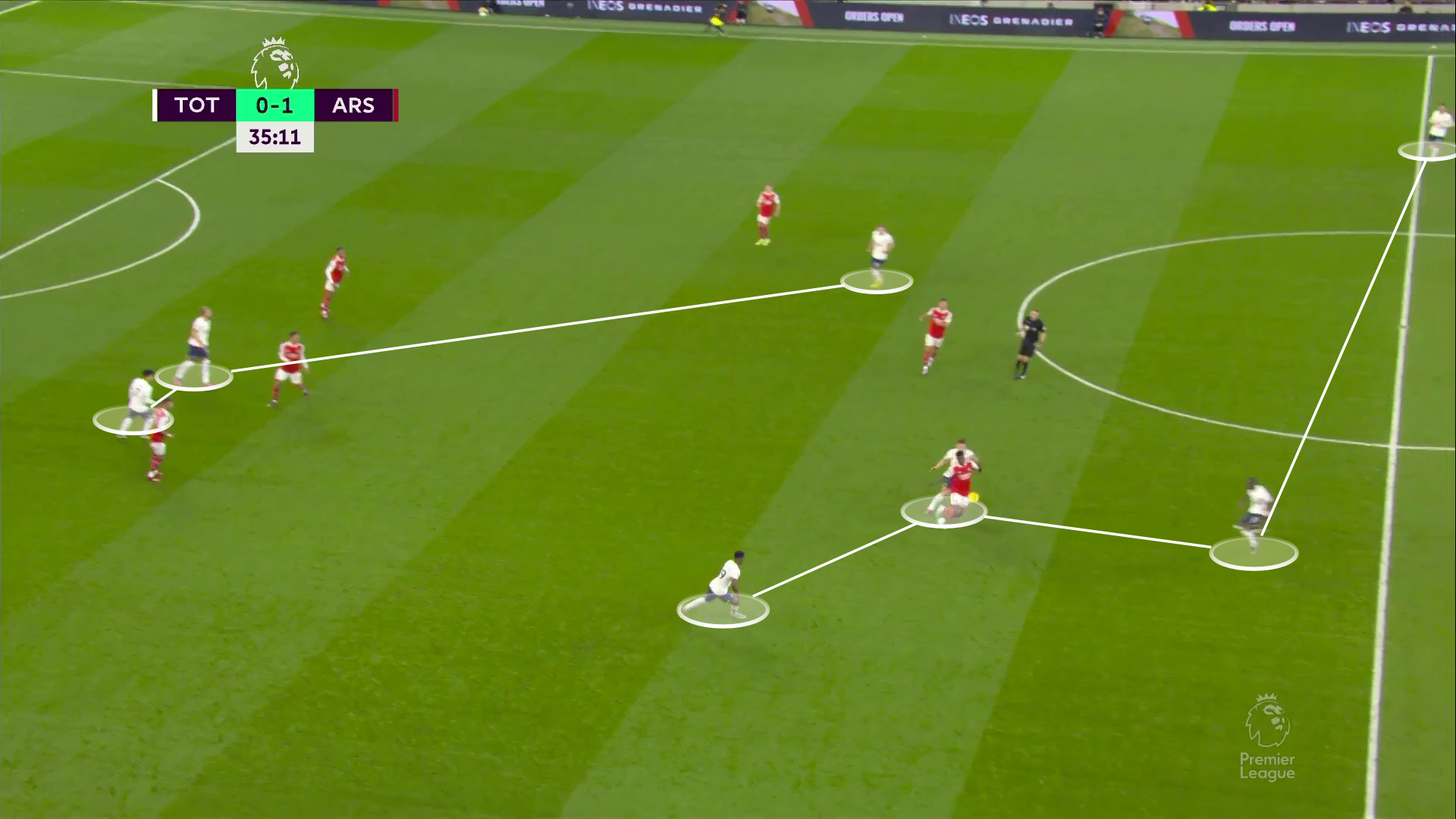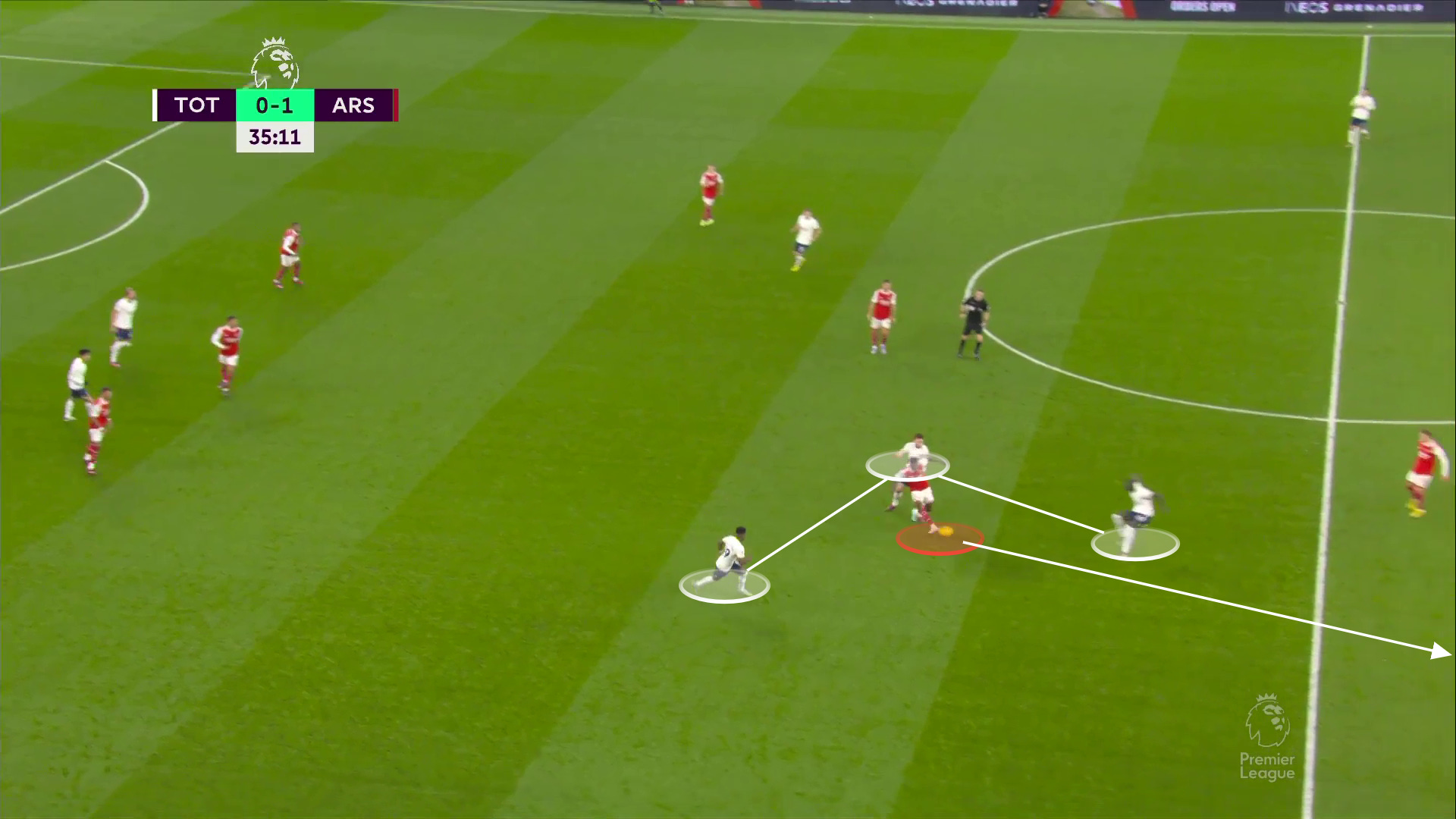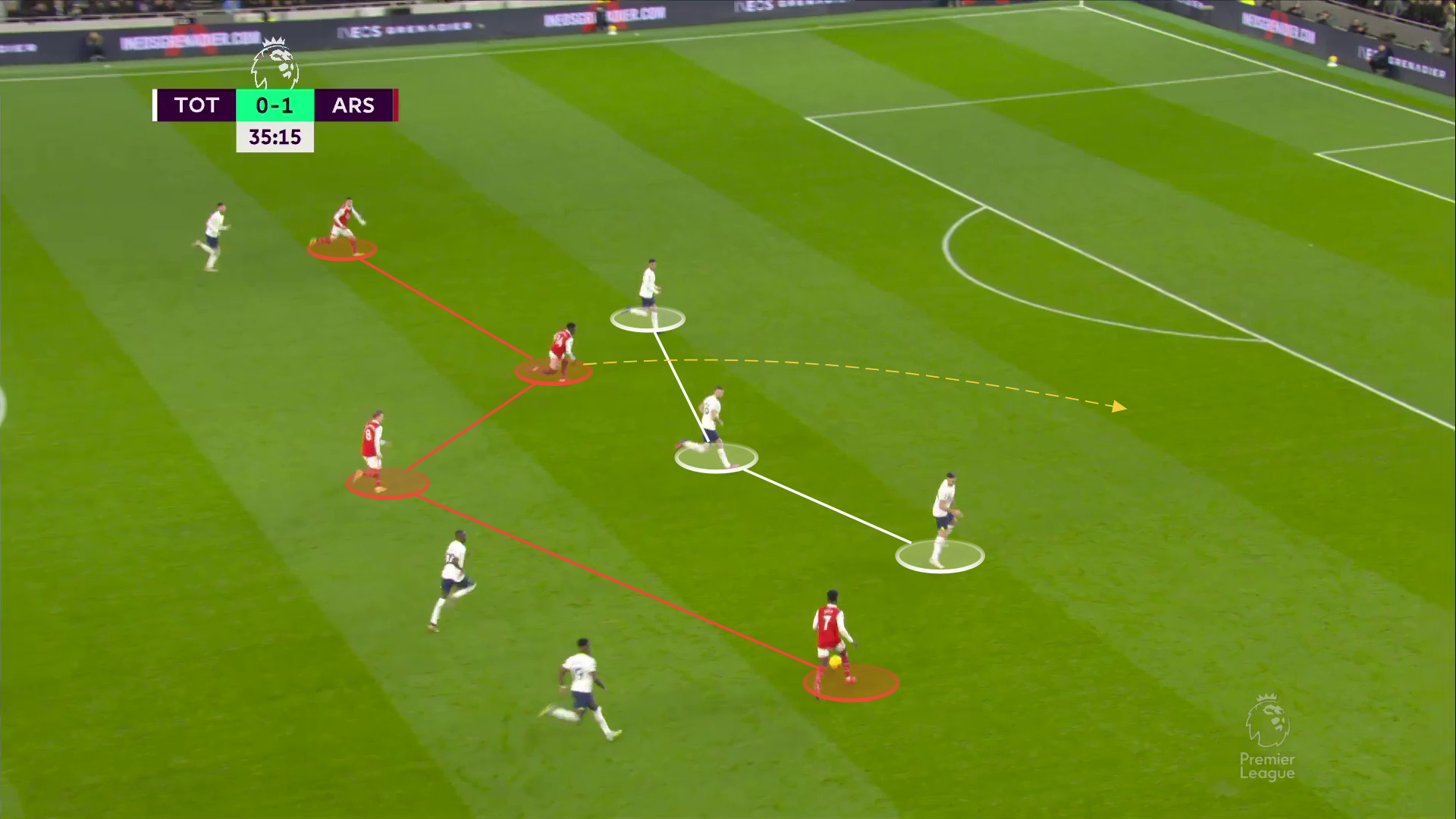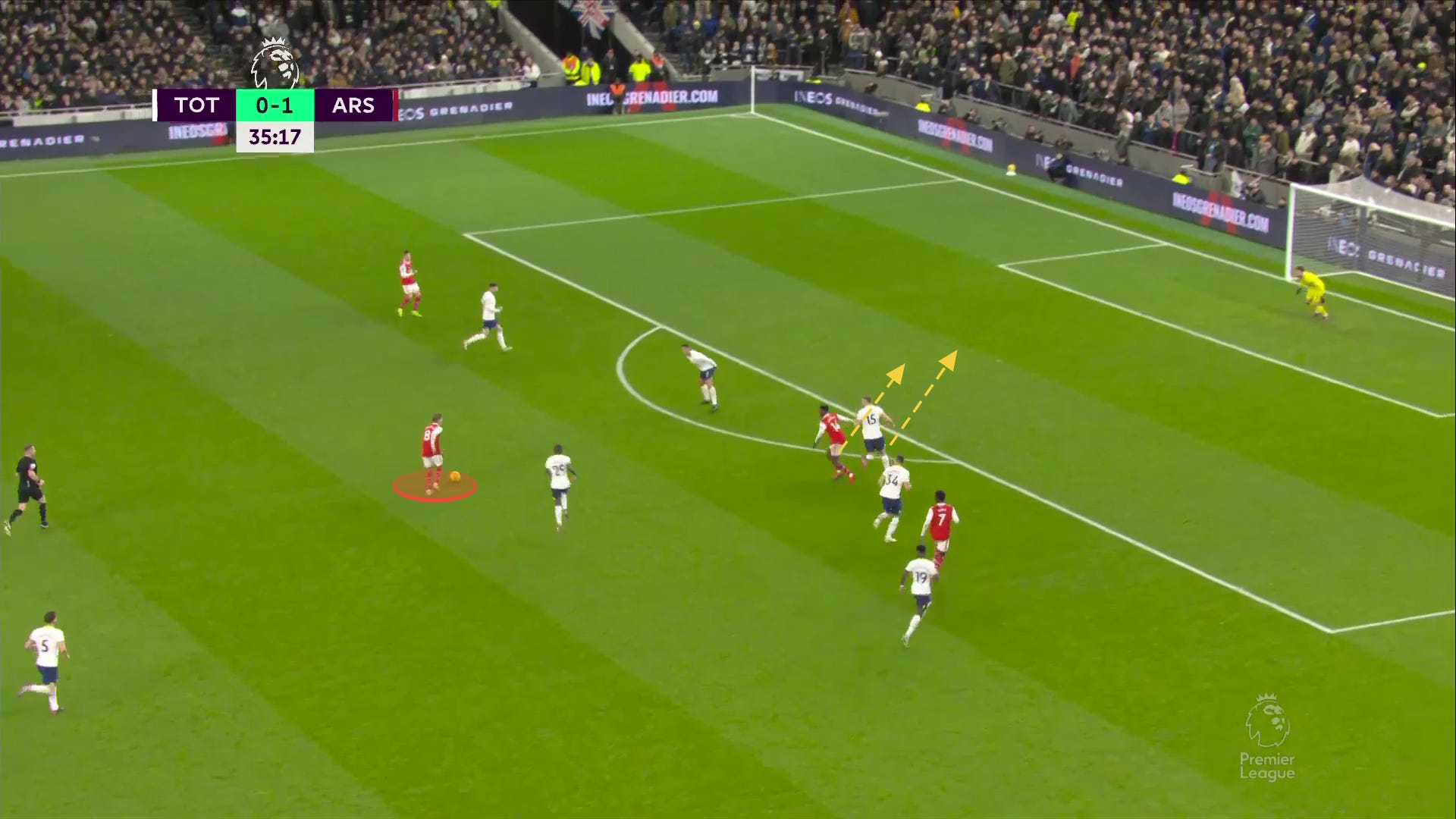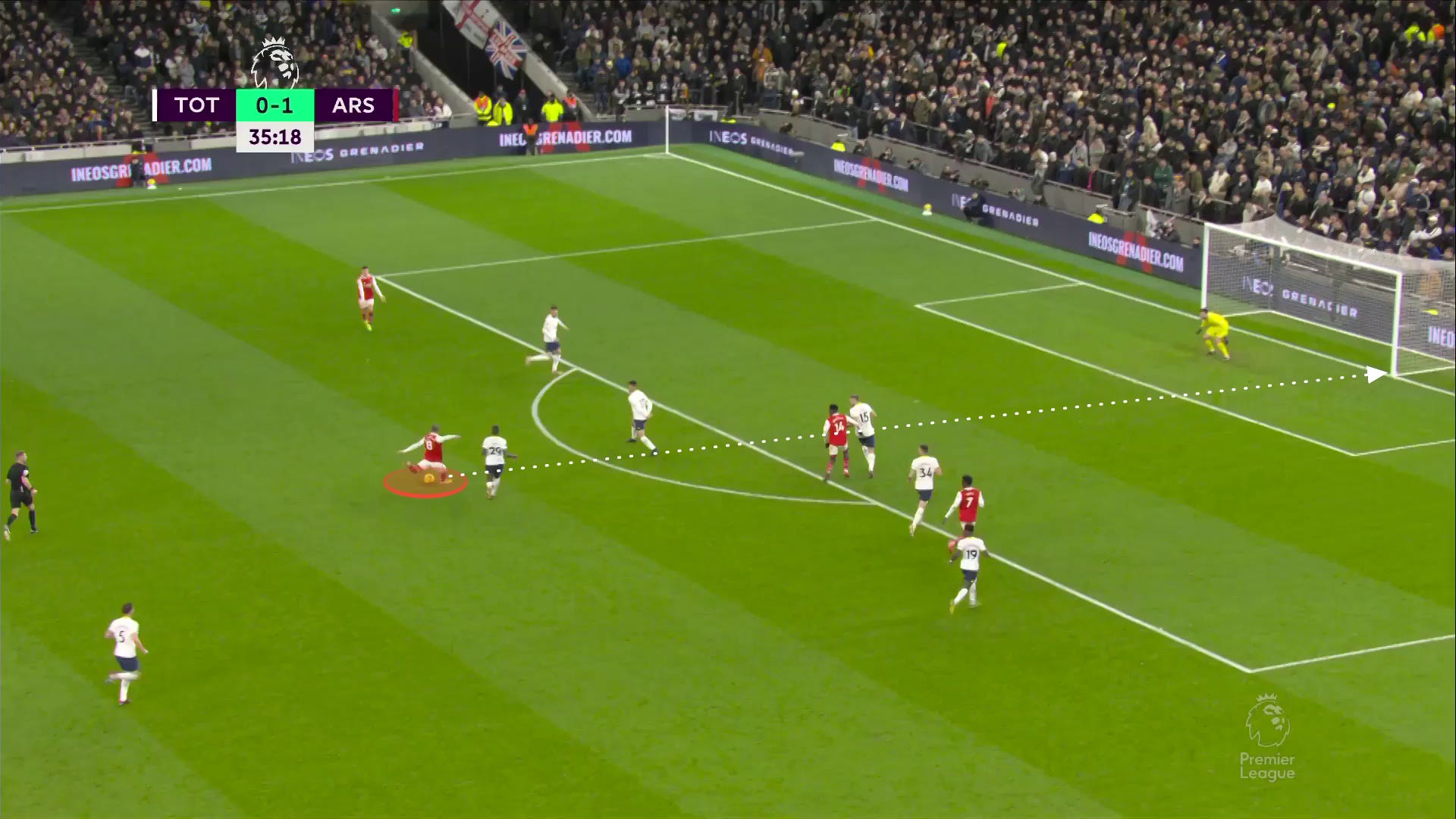Anatomy of a goal
What factors led to the strike that put Arsenal up 2-0 in the North London Derby?
There’s a podcast called “One Heat Minute.” In every episode, Australian Film Journalist Blake Howard and a guest dissect a single 60-second clip of the 1995 crime drama Heat, devoting anywhere from 15 minutes to an hour to the endeavor. They’ve recorded something like 170 episodes in all.
It’s a great film, and I love this concept, but I’m not here to recommend podcasts. I only mention it to make the following post seem reasonable by comparison.
In the the 35th minute of the North London Derby, captain Martin Ødegaard put the Gunners ahead 2-0 with a long, thrilling blast. To help understand how Arsenal created the circumstances for such a goal to arise, I thought we’d dive into the minute preceding it in painstaking detail, and see what we can learn.
Let’s start here. At 34’, Romero picked up his yellow card after clattering into Martinelli. After Zinchenko considered taking the free-kick, Gabriel stepped up to the ball. Ødegaard tried to catch them sleeping with a cut and Gabriel sent it over the top:
…but the ball bounces away after a duel, and Lloris picks it up. He is looking to play it quickly before Arsenal defenders get settled. You can see Son starting to sprint wide:
…but Eddie steps up to annoy the keeper, ignoring Ødegaard’s pleas to get back to the other side of the 4-4-2 (ish) high-pressing shape:
…and Lloris can’t get it off quick.
Here’s the important context from here. Tottenham likes to play it low out of the back. For example, they have the shortest goal kicks in the league, by a margin:
They do this because they want to maintain their shape. Unlike Arsenal, they don’t like rushing players upfield for second balls, because it’s risky for them to spread their players all over the pitch without the tangible promise of creating chances.
But Lloris is carrying scar tissue. Like the first NLD, he started the game by playing it out of the back. And like the first NLD, he was forced into mistakes, and abandoned the plan.
On Sunday, that started with Martinelli jamming his space earlier in the match, forcing an errant pass that turned into a good Nketiah shot:
…and lest we not forget the Saka-induced howler:
Back to real-time. Needless to say, Lloris’ confidence is low at this moment. So as he looks again at facing the possibility of a high 4-4-2-ish press from Arsenal, he considers his options. He has a few routes, with his team set up in the 3-4-3 with wide CB’s and wing-backs, so he considers throwing it:
But eventually, he settles on “fuck that,” and just boots it over the top to Kane:
Next, Kane loses the aerial battle to Saliba. On this side, White and Saliba were 5-for-7 on aerial balls, helping maintain an atmosphere of calm, buzz-killing defense. Saliba’s header is directed to Partey:
And here comes the pivotal moment, and a good indication of what makes Partey such a special player. This is when Tottenham is so vulnerable, and why they don’t like playing it long: once their runners are upfield, their team is spread out all over the pitch, and there are exploitable zones everywhere:
Partey takes the ball and three Spurs players close down on him. It’d be fully understandable if he played a bouncing ball to the teammates behind, which is what Arsenal’s depth options (and many DM’s worldwide) would probably do. But he sees this as an opportunity: “three defenders on me = free space for thee.”
He hits it immediately to Saka:
And just like that, the Arsenal attackers are in what is essentially a 4-on-3:
I can’t tell you how many times I’ve seen these Eddie runs pop up on tape over the last couple weeks. He finds another gear and clears vertical space by dragging Dier forward, and Saka gives Ø the ball. The captain has room in front:
And nobody directly steps up to challenge the long shot. Lloris takes a while to react, and Ødegaard can no longer be trusted to pass here. His newfound shooting confidence leads to a low, well-placed banger:
2-0, Arsenal.
Ultimately, the decisive moment.
I picked it because there’s a potpourri of factors that have led to Arsenal’s success of late, and this moment captures many of them. It shows how the different phases of the game are so intertwined: by successfully pressuring Lloris early, they forced him to play against preference (prayerfully booting it long). That action caused Tottenham to be out of shape. By calmly winning the header, Arsenal won possession against a spread opponent — but weren’t satisfied with possession. Within a few seconds, decisive passes (by Partey) and runs (by Eddie and others) put them right back in front of Lloris for a long, strategic shot that largely sealed the game.
In this case, the high-press didn’t have to win the ball itself to help cause a goal. This is what is meant when people say “pressure is cumulative.” Good stuff, all around.
OK, that’s it for now. Should be checking in later this week with a post on winger targets. Be good.
🔥



